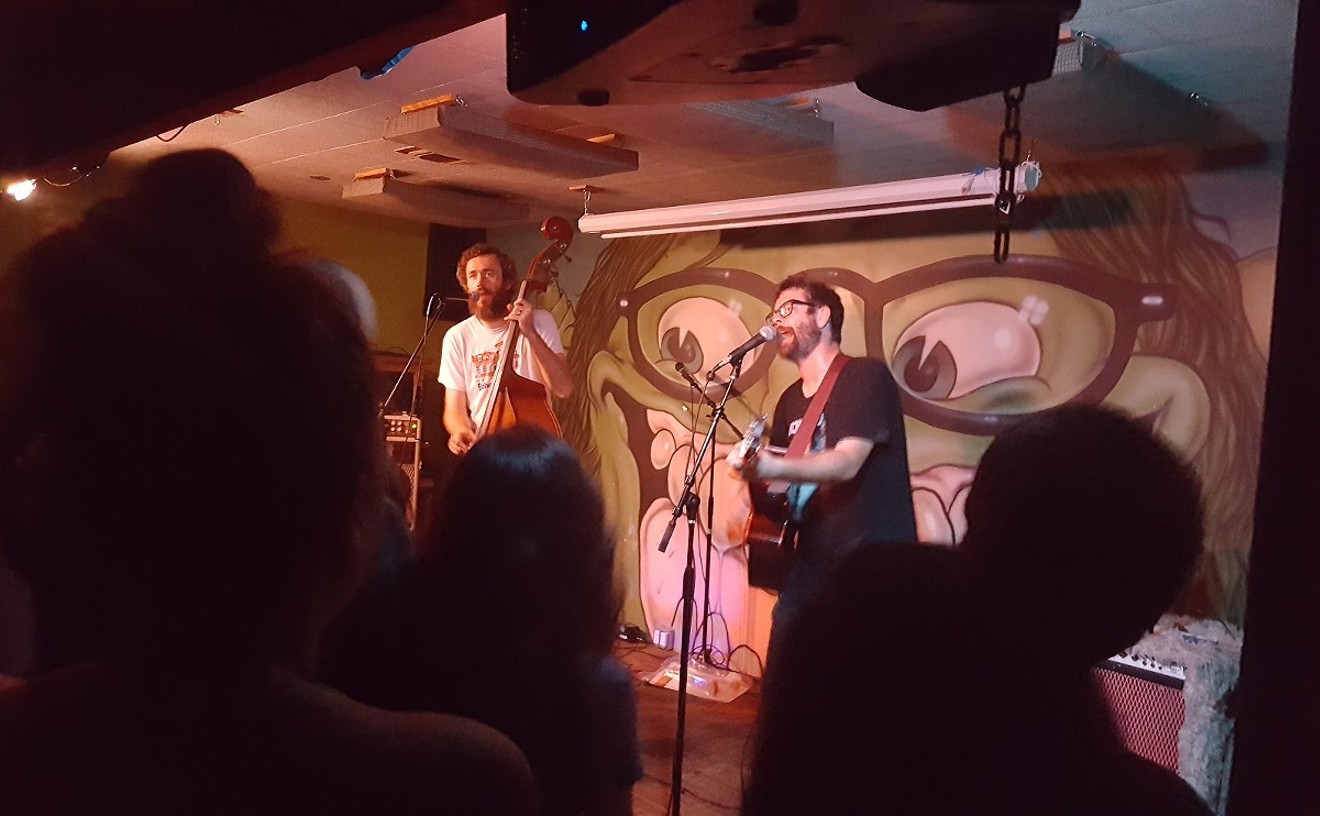While one once sought out a little psychotherapy, the challenge today is to find some place to go to get away from it. All this wearisome, confessional self-therapy has at least led to some interesting art. Paula Vogel's How I Learned to Drive is a champion chunk of soul-bearing, pop-psych theater, and critics have been writhing in appreciation of its artful handling of child sexual abuse for nearly two years.
Vogel's one-act dramedy is hard to watch for more reasons than its delicate subject matter, or, in the case of Arizona Theatre Company's current production, occasionally clunky acting. It's because Vogel's manipulation of comedy and tragedy continually catches her audience off guard, making us all culpable (did I just laugh at a child-abuse reference?!) in the crimes we're witnessing up onstage.
It's easy to see why Vogel's play won the Pulitzer Prize for Drama last year. How I Learned to Drive defies the usual media assumptions about victims and victimizers as it recalls the life of 40-year-old Li'l Bit, who is here as both narrator and participant in her own memories. As a fatherless adolescent yearning for male attention, she fell prey to a good-natured, middle-aged man. Uncle Peck was not only the one adult who paid Li'l Bit any mind, he was also the only educated member of her backwoods brood--an important fact to this precocious kid who yearned to break away and learn about the world. While he's teaching Li'l Bit how to drive, Uncle Peck begins the abuse that lasts until she goes away to college nearly eight years later.
The family we visit here is a sexual dysfunction waiting to happen. These well-meaning, emotionally naive folks all have nicknames relating to their genitals (Big Poppa; Peck; Li'l Bit). And every argument we witness--all of them in the presence of our prepubescent heroine--is somehow related to getting laid. So it's no surprise when we discover that, while creepy Aunt Mary is aware of the sexual shenanigans between her niece and her husband, she blames the abuse on Li'l Bit.
What makes this story interesting is the tone that Vogel takes in its telling. How I Learned to Drive is Tragedy Lite, a drama laced with the frilly threadwork of humor. Our queasy laughter steers us through a jumbled chronology of events in which Vogel uses driving lessons--an American rite of passage--as a construct for discussing sex and stereotypes. She employs a Greek Chorus to comment on the filthier aspects of the story and to provide much-needed (though generally over-employed) comic relief, and an annoying number of driving metaphors ("Reverse!" "Shifting gears!"), shouted out by the cast members, to denote scene changes. These herky-jerky transitions aside, the script is inventively structured and gives us a sense of how complicated the issue of familial sexual abuse really is.
Vogel doesn't excuse Peck's behavior, nor does she condone child abuse or dismiss the emotional damage it does. But she's drawn Uncle Peck as something other than the stereotypically sinister pedophile, lurking in the shadows in a trenchcoat. He's neither physically violent nor especially menacing; in fact, he's warm and generous with Li'l Bit, who thinks she's in control of the abuse.
He's also a snake. We watch him as he also seduces his young nephew, and later hear him tell Li'l Bit that their "little secret" is the only thing that's keeping him away from the booze he's addicted to. The compassion with which Vogel treats her characters extends to this troubled fellow, whom she wants us to care about in spite of his mistakes. After all, Li'l Bit tells us, "I love him."
There's enough emotion in Vogel's words to convey a roomful of feelings, and James Carpenter takes advantage of every syllable. As Uncle Peck, he's both kindhearted and corrupt, and it's easy to see why his niece is taken in by him. Peck is the most complex moving character of the piece, and one can't help but admire the actor's refusal to sentimentalize him. Kate Goehring plays with confidence both a child and an adult, expressing the naivete of the young girl and the forgiveness of the mature woman with simple body language and a casual shift in diction.
The chorus is mostly fine, although alongside the clever clowning of local wonder Bob Sorenson--who plays a crotchety old man and a pimply adolescent with equal aplomb--Christine Williams' playing of a cranky grandmother and a snooty teen appears flat and uninspired. Director David Ira Goldstein tends to freeze these ancillary players in place while they recite and declaim, but otherwise his staging is meticulous.
Not everyone is applauding this production: ATC has fielded complaints from a handful of irate subscribers who want to turn in their tickets rather than attend a play about child sexual abuse. That's too bad, because How I Learned to Drive is as much about pedophilia as The Sound of Music is about Nazism.
Vogel's greater message is that love can be complicated, and forgiveness sometimes impossible.
How I Learned to Drive continues through Sunday, April 11, at Herberger Theater Center, 222 East Monroe.










